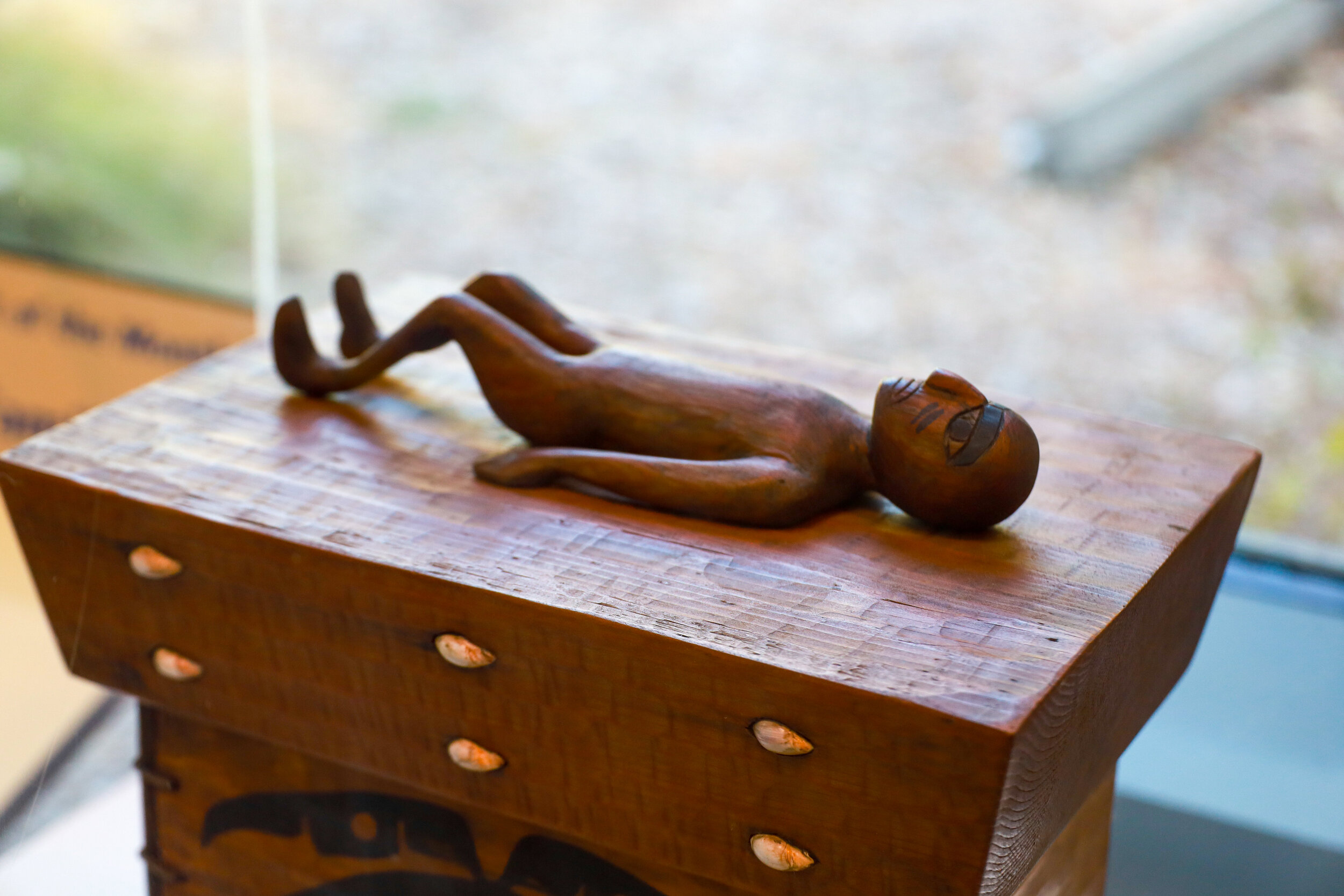Bentwood Box
1976.14.62ab Museum Purchase
October’s Artifact of the Month is a beautiful Northwest Coast bentwood box. An indigenous Northwest Coast artist was commissioned to create the box to demonstrate the construction methods of this unique craft. It came into the Museum Collection in 1976.
Bentwood objects are made by wetting or steaming wood, then bending it to the desired shape and allowing it to dry and harden in its new form. A bentwood box generally consists of one cedar plank bent into a rectangle with one piece each for the base and top. To make the box sides, the artist cuts three grooves, or kerfs, for the corners of the box. After the plank is steamed and shaped, it is bent at the kerf and lashed in place. The fourth corner is secured in place by sewing with cord. The sides are fitted to the base and secured with glue. Careful fitting of this joint makes the box waterproof.
The primary tribes associated with bentwood boxes are the Tlingit, Haida, Coast Tsimshian, and Bella Bella who historically lived from north of Vancouver Island, Canada to Prince William Sound, Alaska. The two hundred plus inches of annual rainfall and fierce winter storms meant a lot of time indoors where they could gather, feast, repair old items, create new items, and develop and refine their distinctive and iconic art forms such as bentwood boxes.
To learn more about this artifact, visit the Artifact of the Month exhibit inside the Museum entrance at Turtle Bay Exploration Park. You can also click the link below for the Artifact of the Month webpage for more information on the exhibit and past blogs.
Cast your vote for the next Artifact of the Month below…













